Asking Your Donors to Give Again
Are you asking your new donors to give again? If not, you should be!
Why donor retention is a big deal
There are three big reasons why you should be asking your existing donors to give again. And—surprise—they all have to do with raising more money:
1. It costs more to attract new donors than to retain existing ones.
Research has shown that it costs ten times more to acquire a new donor than it does to keep a donor. That’s right, 10X more! So if your current fundraising strategy is all about finding new donors, you’re not making the best use of your resources. If you want to raise more money, you’ll need to dig into your donor database to find out who’s already primed to give.
2. Even small contributions can add up to a large Lifetime Value.
If you’re running your nonprofit like a business, you should know how much your nonprofit spends to acquire a single donor (your Donor Acquisition Cost or DAC for short). While it may cost more to acquire a donor than they contribute at first, the Lifetime Value they provide can justify your spending.
Lifetime Value refers to the net amount that a single donor contributes to your organization for as long as they’re in your donor database. Say you spent $100 to receive a $25 contribution from a new donor this year. Depending on your upfront costs, their total Lifetime Value will exceed your DAC if you retain them as donors. Even if they never increase their contribution amount, in 5 years they will donate $125. By asking these donors to give again, you can recuperate your initial losses and end up with a profit.
3. The majority of major gifts are made after 5 years of giving.
This statistic comes from the Major Gift Fundraising Report, which looks at major gift fundraising at smaller organizations with an income of $10 million or less. A single major gift can bring in more money than all other individual contributions for the year. And a major gift might be 10, 20, or 30% of your entire yearly budget. But cultivating these gifts takes time! By focusing on donor retention, you can begin building the kind of relationships that will provide your nonprofit with key funding in the long run. The biggest takeaway here is that you absolutely want to ask your existing donors to give again. If you don’t, you might be missing out on more money than you think.
strategies for a successful second (or 3rd, or 4th) ask
One of the biggest reasons donors never give again is that the nonprofits they care about don’t seem to be interested in them. In fact, research shows that 53% of donors leave due to the charity’s lack of communication.

So what can you do to make sure that when you make another ask, your existing donors won’t ghost you?
always say thank you
What is the quickest way to burn a bridge between your nonprofit and a new supporter? Not saying thank you. Whether you decide to send a letter via snail mail or reach out with a friendly thank-you email, it’s important to recognize their initial donation before making another ask. And there are a number of creative ways to show your gratitude!
The folks at Wikimedia do a particularly great job of cultivating recurring donations with their thank-you emails. For example, one year they created an animated .gif header to illustrate how their platform makes it possible for people learn:

And included the “gift” of curated images for donors.
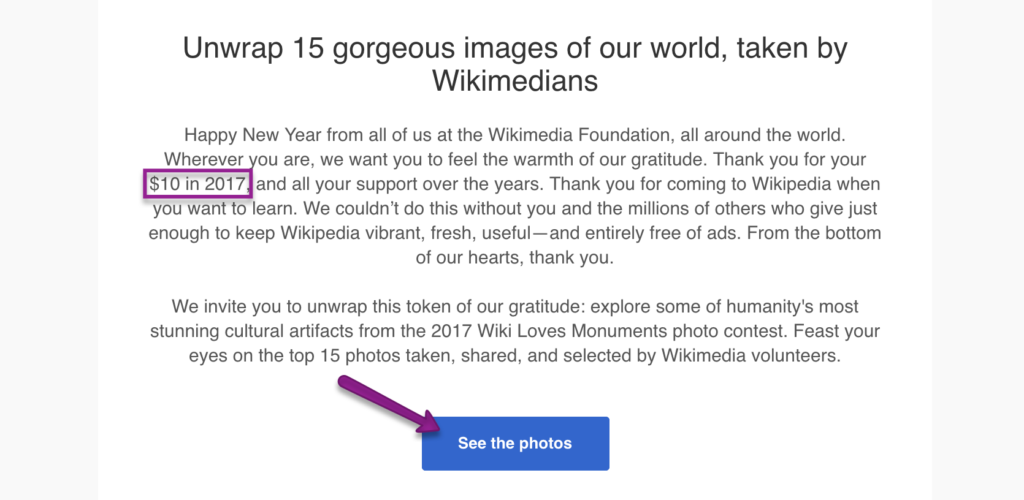
To cultivate recurring donations, they made sure that giving and communication wasn’t just a one-way street.
Stay in touch! and show their impact
If you, like the Wikimedia Foundation, want to retain your donors, you’ll need to prioritize ongoing communications. It begins with your thank-you letter, but there’s more you can do to keep your organization top of mind—even when you’re not directly appealing for another donation. Sharing stories from your community is a perfect touchpoint. And you can share these updates through a regular newsletter or blog and social media posts.
Ask for feedback
Sending out brief surveys to your existing donors can help you tailor your communications and outreach. Make sure to keep surveys short (between 3 – 12 questions) so that they can be completed in under five minutes. You can create your survey using online tools like Survey Monkey or Google Forms and embed them right into your emails. Along with a heartfelt thank-you message in the example above, Wikimedia also solicited feedback in their follow-up email:
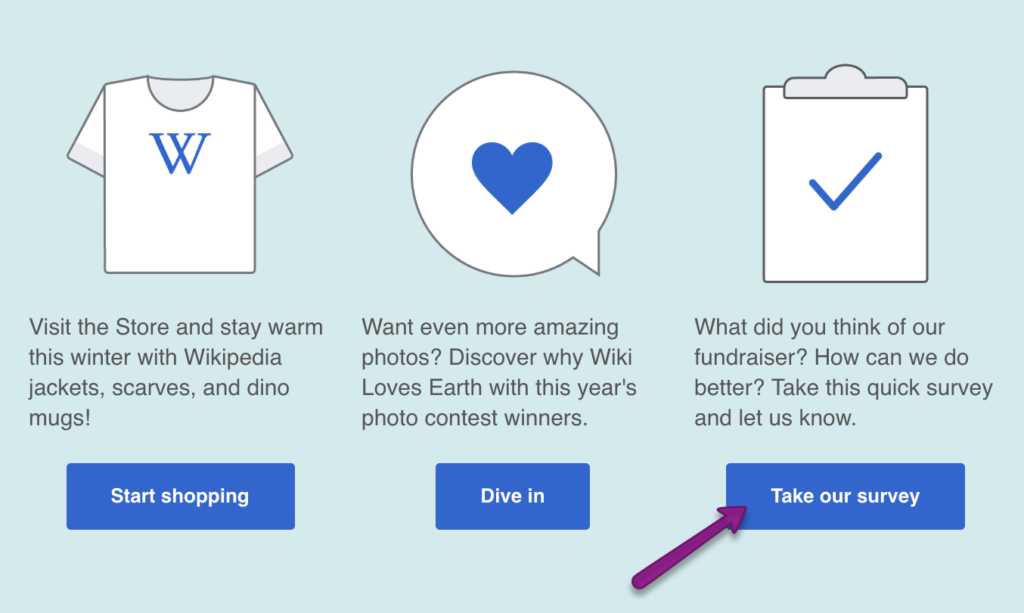
Incorporating feedback from your supporters makes them feel personally involved in your cause. And asking the opinion of existing supporters will help you know the best ways to ask for support in the future. Finally, feeling that your nonprofit hears their individual perspective will prime them to give in the future.
Personalize your followup
When you send your follow-up communications, you’ll want to be sure to recognize the unique contribution that each donor makes. For example, when Wikimedia sent their message, they included the supporter’s donation amount and date. Then, once they needed to ask for another donation, they made it clear that they knew exactly how their donors had supported them in the past. Including this information tells supporters that they are known, that their contributions are recognized, and that you should keep working together towards a shared goal. Here’s how Wikimedia asked their donors to give again:
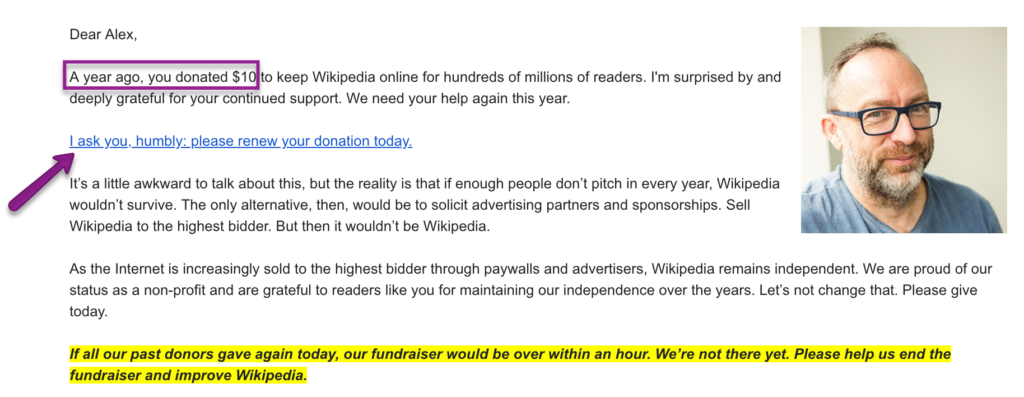
This is where all the information you collect in your donor database comes in handy! Depending on the number of emails you have to send, you can personalize yours one by one, use a spreadsheet and plugin like Yet Another Mail Merge, or create custom merge fields in mass email tools like Mailchimp to display unique data in each message. You should also segment your donor lists to show that you know exactly who each person is and how they’ve engaged with your organization (whether you really do or not). Segmenting your mailing lists will allow you to tailor communications based on:
- Specific programs they have supported
- Other ways they’ve been involved with your work (like volunteering)
- Other data you have about their philanthropic interests
Getting personal will help you raise more money from the people who are already invested in your cause. Are you ready to start asking your donors to give again?

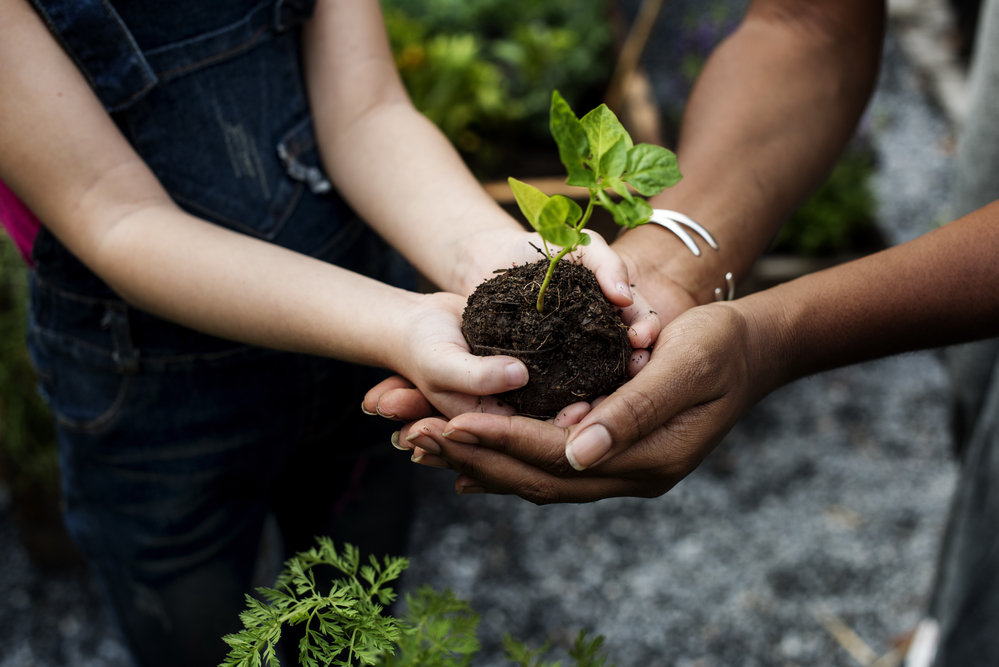
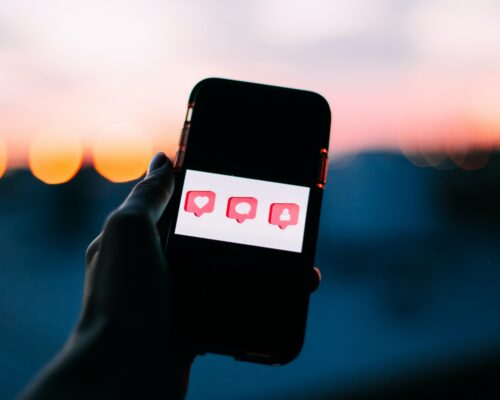

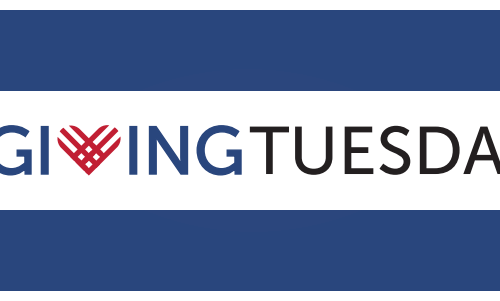
Shammy Peterson
July 1, 2021It caught my attention when you said that it is important to recognize the initial donation before making another task. As you said, there are ways to show your gratitude. This is something that must be considered by organizations that aim to get more donations for a cause. I could imagine how providing the right recognition could help more individuals to give again to help others.